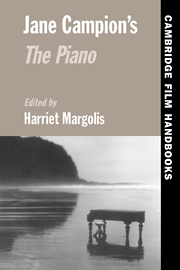Book contents
1 - Music in The Piano
Published online by Cambridge University Press: 16 January 2010
Summary
Although Jane Campion's The Piano received triumphant critical raves, music critics and musicians found the score disappointing, calling Michael Nyman's music simplistic, anachronistic, and relentless. The compact disc based on the film's music that Nyman recorded, however, was a runaway success in its niche, selling more than a million and a half copies in the first few months. Such a state of affairs might tempt us simply to call the music critics wrong, or at least to take note of a gulf between popular musical taste and the critical press. On the other hand, the phenomenon more likely may stand as an example of the “halo effect.” That is, filmgoers purchase recordings of the soundtrack driven by their desire to reexperience the story through listening to the music, which calls up memory and affect through association.
The divergence between glowing critical assessments of the film as a whole and negative reviews of its music suggests a considerable gap between a score's intrinsic musical qualities and its aptness and power in the fabric of a film. In this essay I shall examine the narrative and visual deployment of music, in order to help explain what makes The Piano such a moving and troubling work, and the way in which music aids in constructing its world.
Music is central to The Piano. Not only is Ada, the main character, a musician; she is mute as well, so that music – in this story about people's ability to “hear” one another – doubly serves as her voice.
- Type
- Chapter
- Information
- Jane Campion's The Piano , pp. 42 - 58Publisher: Cambridge University PressPrint publication year: 1999



